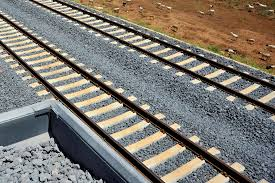|
Getting your Trinity Audio player ready...
|
Monrovia, Liberia – Despite the hype surrounding Ivanhoe Liberia’s recent rail and port access agreement, critics say the deal appears less about developing Liberia and more about using the country as a fundraising tool to support mining operations in Guinea.
At the center of the controversy is Ivanhoe Atlantic’s plan to list on the Australian Securities Exchange, targeting a valuation of nearly US$300 million. While the company has marketed its Liberia deal as a gateway to regional development, emerging details suggest that Liberia’s role is largely limited to providing transport routes for Guinean iron ore, with minimal direct industrial investment on Liberian soil.
Ivanhoe’s principal project, the high-grade Kon Kweni iron ore deposit, is located entirely in Guinea, not Liberia. Yet, the company’s negotiations and public messaging have heavily emphasized its Liberia agreements, especially the rail and port access arrangement signed in July with the Liberian Government. Observers argue that this deal is being used as a key selling point to attract investors ahead of its Australian stock market float.
“This is not a Liberia mining project. This is a Guinean mining project using Liberian infrastructure as a corridor,” one mining policy analyst told this paper. “The problem is that the government is selling it to Liberians as a big investment coming to the country, when in reality most of the value creation will happen outside our borders.”
Under the current agreement, Ivanhoe Liberia would transport iron ore from Guinea through Liberia’s rail system and export it via Liberian ports. The company is expected to initially move about five million tonnes per year, with a long-term option to increase that to 30 million tonnes per annum, subject to new investments in rail and port upgrades.

However, concerns are growing that Liberia’s only guaranteed benefits for now are transit fees and port user charges, while the company leverages the deal to secure international financing for Guinea-based mining operations.
Even more troubling to critics is the fact that Guinea has not yet formally approved or finalized the broader cross-border framework connected to the project. Without Guinea’s full legal and political endorsement, some analysts argue that the entire plan remains speculative and is being prematurely marketed to investors as if it were a settled deal.
“This IPO narrative is moving faster than the legal reality on the ground,” said another industry observer. “Guinea has not even given full green light yet, but Ivanhoe is already using Liberia’s signature to advertise project certainty to the market.”
While Ivanhoe has agreed to pay US$37 million upfront to the former Liberian government and an additional US$25 million in staged payments tied to ratification and physical access, critics argue that these figures pale in comparison to the long-term economic value of the railway and port infrastructure being committed for decades of use.

They also question how much local job creation, technology transfer, or industrial development Liberia will actually gain, considering that the mining, processing, and majority of operational activities will take place in Guinea.
Adding to the skepticism, Ivanhoe’s own CEO, Bronwyn Barnes, openly stated that the company was “playing geopolitics,” emphasizing strategic discussions with the US government about securing iron ore supply chains for American defense and industrial interests. For many Liberians, this reinforces the perception that the deal is driven more by global power competition than by Liberia’s national development priorities.
The company has also stressed that it will not work with Chinese investors or offtake partners, focusing …


Comments are closed.